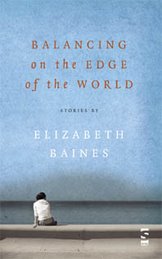I love our reading group. Last Friday we had our group Christmas dinner, which may seem strange. It was originally scheduled for a date in December, but in the event I couldn't make it, as it clashed with the Salt Christmas party, and the other members decided to reschedule for my sake - by which I was very touched. Yet here I've been failing to attend to group matters: I've been so busy with stuff like my virtual book tour that I still haven't written up our last discussion. So here it is, or at any rate as much of it as I can remember:
We met at Clare's to discuss a book she had suggested: The String of Pearls, by the Jewish Austrian novelist Joseph Roth, translated by Michael Hofmann. It's the story of the events which ensue when the Shah of Persia, on a visit to Vienna at the end of the nineteenth century, desires a beautiful countess and decides that he must have her, and the knock-on effects on characters from various strata of Viennese society.
I have to say we were more than a bit confounded by this novel. Having read Hofmann's translation of the very psychological The Reader, we were perhaps stupidly expecting something in the same vein, and were surprised to find this a somewhat old-fashioned omniscient tale. But we felt it was something about the novel itself which was difficult to grasp. As the novel follows the chain of consequences, the focus shifts from character to character, following each to their ruin and then leaving him or her and moving onto the next with an abruptness we found odd. Ann and I felt strongly too that we were missing things - that there were references we weren't getting, and possibly ironies and jokes. We had no idea whether this were the fault of the novel or the translation or indeed our own lack of historical background, but since this was after all a novel about the tenor of Viennese society at the centre of a crumbling empire, we found this frustrating. We were especially suspicious of the translation when it came to the representations of colloquial speech, which seemed awkward, and we wished that our German-speaking member Hans had been there to advise us, and indeed look at the original as he had with The Reader. Especially, though, we kept not being able to visualise things: for instance, we imagined the characters in Edwardian costume, but then suddenly there would be an indication that a character was dressed in more modern clothes.
Clare suggested that this was an effect deliberately created by Roth, as an indication of the flux and confusion of the society being portrayed. She suggested too that the abruptness of the changes of focus between characters was a formal replication of the effect on them of the disintegrating society. Nevertheless, she had to agree that there had been something unsatisfying about it all. Every one of us, it turned out, had been reduced to reading Hofmann's introduction for clues as to how we should take this novel, yet had found that it provided few, concentrating on the more superficial tropes such as that of doubling and on teasing out the parallels with strands in others of Roth's novels. So, still confounded and unsatisfied, we dropped the subject of the book and turned to other more gossipy matters.
Our archived discussions can be found here, and a list of all the books we have discussed here.
Subscribe to:
Post Comments (Atom)









No comments:
Post a Comment